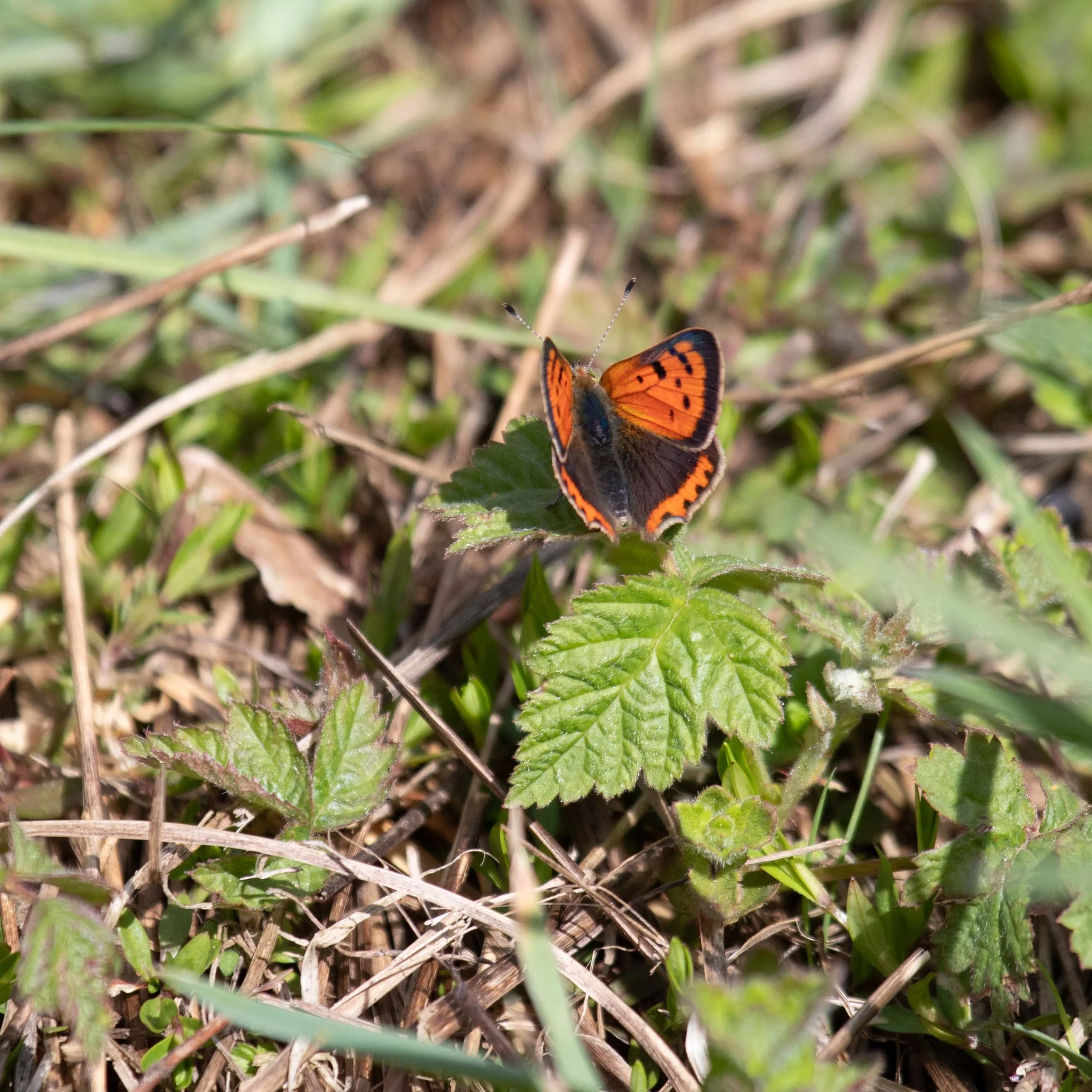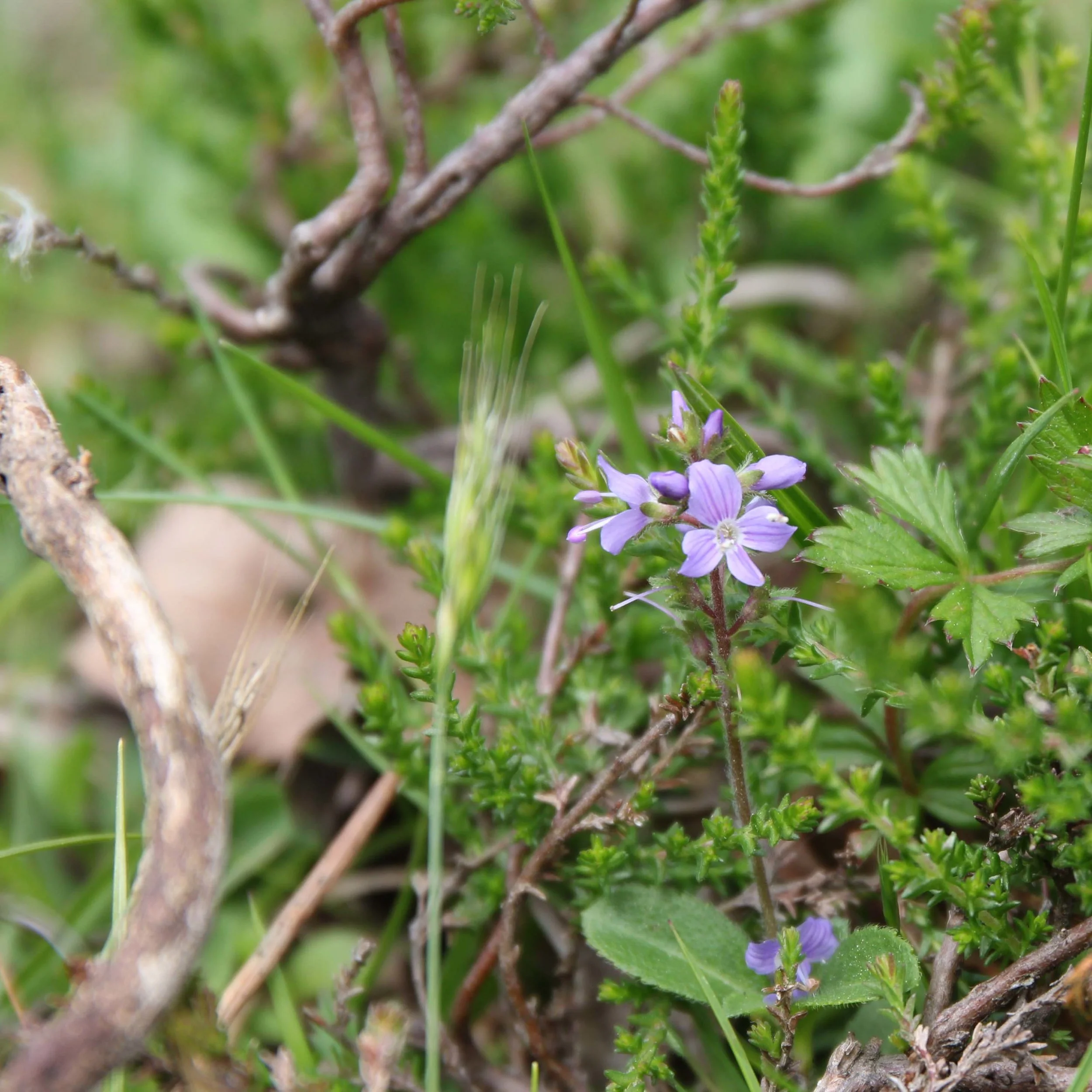Week One: Martin Down - butterflies and orchids
It was my little outing to the local nature reserve, Martin Down, that inspired me to spend the summer challenging myself to learn more about nature.
Martin down is comprised of chalk down land, scrub and broadleaf wood, but it’s the chalk habitat that dominates here where an abundance of wildflowers teems with butterflies and insects. The reserve, based on the Dorset/Wiltshire border, is also home to some of our rarer species such as the turtle dove – which I actually heard today when whilst walking the dog.
The three species I’ve learnt about this week are pretty common, and relatively easily identifiable – so it was a nice first exercise for me.
Butterfly: Small Copper (Lycaena phlaeas)
I’ve never seen one of these tiny butterflies before, and it instantly brought a smile to my face. A tiger lurking in the grass, it’s bold orange and black markings glowing against green. According to Collins Wild Guide Butterflies and Moths, it likes sunny meadows and forest clearings – I found it on an open section of chalk grassland so that fits the description. The male and female are similar in appearance with front wings are edged in dark brown and the hindwing bottom edges lined with copper.
I found it interesting to read in the Collins guide that the male small copper is incredibly territorial and will defend its patch with all it’s might, even against species much larger than itself.
Small coppers are on the wing from early Spring to early Autumn, so I’m sure I will have plenty more encounters with this beautiful butterfly (and be able to identify it).
To identify this butterfly, I used the field guide mentioned previously and asked around on a few Facebook groups as well just to be sure.
Butterfly: Speckled Wood (Parage aegeria)
I know, I know – I should have known what this super common butterfly was. I had an inkling, but I wasn’t entirely sure, so I had to double check. I was strolling through Martin Down’s shaded woodland areas when my eyes were drawn to the fluttering of brown wings adorned with creamy dots. Not one set, or two but loads of them – all flitting about in the shade of the trees.
Collins Wild Guide Butterflies and Moths explains that the males are territorial and will readily defend patches of sunlight, which seemed to be what was happening here. One butterfly would chase another away before coming to rest in the pool of sunlight. Although, the sexes are alike in colour and markings so I wasn’t sure who was who.
Speckled woods are also on the wing from early Spring to early Autumn, so again, lots more opportunities to see this woodland warrior.
For this identification I used the Collins Wild Guide Butterflies and Moths – the colours and patterns were ones I recognised, it was just a case of finding them in the book.
Orchid: Early Purple Orchid (Orchis mascula)
I knew this was an orchid as soon as I saw its long purple stem, and distinctive purple leaves amidst the grasses of the chalk down land. So, I did a quick google search for ‘purple orchids April/May’ and searched through the pictures until I found the culprit. It’s purple flowers and blade shaped leaves gave the game away.
The early purple orchid is relatively common and can be found in a variety of habitats; as well as woodlands and meadows it can also be spotted growing in roadside verges (I always think of orchids as delicate, but this gives it a bit of edge).
Its name certainly gives away its appearance in the ecological calendar, and is also a great way to help identify it. It’s an EARLY purple orchid, so it’s going to be found relatively early in the season – best spotted between April and June.
This orchid also has an array of folk names my favourite being: Goosey ganders, although Adder’s meat and Bloody butchers come in close.
You can read more about this fascinating orchid on the Plantlife website.





